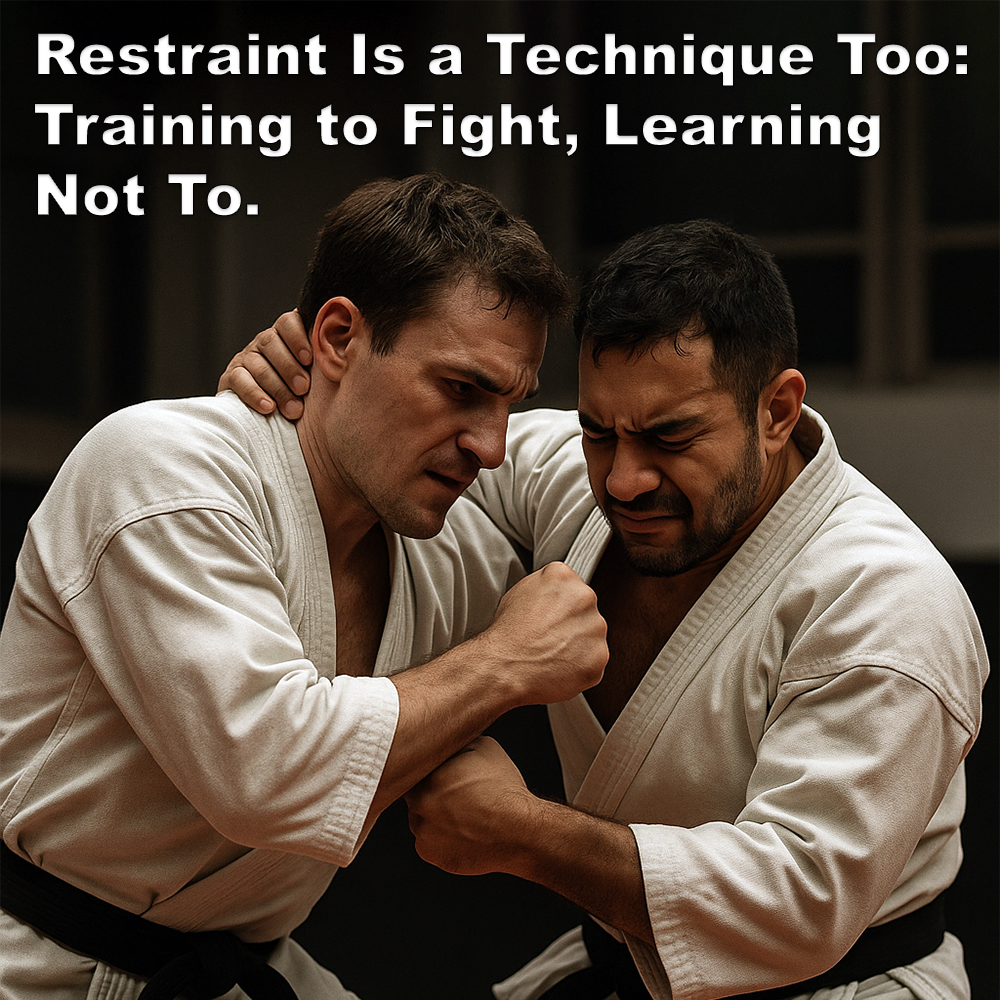
(Approx 2 minute 40 second read)
In karate, a term that’s not heard very often is “Jissen” (実践 – じっせん). It translates directly to “actual fighting” or “real combat” – as in applying theory in real-world, practical situations.
.
This approach prioritizes what genuinely works in a real confrontation, often incorporating elements like grappling, throws, and close-range strikes that might be less emphasized in more sport-oriented or aesthetically driven styles.
.
Jissen Kumite, for example, refers to full-contact sparring designed to simulate the unpredictability and intensity of an actual encounter.
.
It’s important to note that the exact rules and intensity of this form of sparring can vary slightly between different styles and dojos that emphasize it.
.
Ultimately, jissen embodies a dedication to the combative essence of karate. It can also emphasize the practical application of kata, ensuring that the movements learned in forms have a real purpose in a self-defense situation.
.
This philosophy cultivates both physical conditioning and mental resilience, preparing practitioners to perform under pressure and react effectively in genuine conflict – rather than solely focusing on competition or performance aspects.
.
Many practitioners train to fight first – because they know no other way. It’s understandable. You step into the dojo to learn how to protect yourself, how to deal with violence, how to respond when there’s no other option. But as time goes on, if you’re paying attention, you start to realize something deeper: real fighting isn’t always about fists or technique. It’s about choice.
.
We talk about “real combat”, but too often that gets reduced to physical confrontation. In truth, the physical includes the decisions you make when the stakes are high and emotions run hot. It includes the moments you’re provoked, insulted, or pulled into other people’s drama – and the choice you make to either engage or walk away (I wrote about this recently).
.
Because real fighting is messy. It’s not sparring. And it’s rarely fair. That’s why you know, the best fight is the one you avoid altogether.
.
And of course, you don’t need to swing a fist to be in a fight.
.
Ego is the need to prove, to control, to be seen as “right”. And it’s a trap. If you’re spending your time trying to win every exchange, you’re not defending yourself – you’re just feeding the fire.
.
I believe our training should demand something else. It demands clarity. The ability to see whether the conflict in front of you is even worth your energy.
.
That’s not weakness – that’s maturity. Real strength is measured not by how hard you hit, but by how well you choose your battles.
.
There’s a discipline in walking away. A sharpness in restraint. And I believe it’s one of the highest expressions of self-defense we can teach – because it doesn’t rely on brute force or clever technique. It relies on character.
.
Someone said to me, “You can’t walk away when you’re trapped.” They’re right – but that’s why we train. When you’re grabbed, you learn to break free. When your head’s a mess, you learn to cut through the noise. Whether it’s a hand grabbing your clothing or something eating at you from the inside, the answer’s the same: you find a way out.
.
You train your body to fight. But over time, you should be training your mind to know when not to.
.
The dojo is where we learn how to move, how to respond, how to control. Life tests your composure – when people try to bait you into pettiness, when someone spreads lies or provokes you into reacting. That’s when you find out what all those years of training really mean.
.
Real combat isn’t just about stopping someone else. It’s about not letting the worst parts of them awaken the worst parts of you.
.
.
Written by Adam Carter
